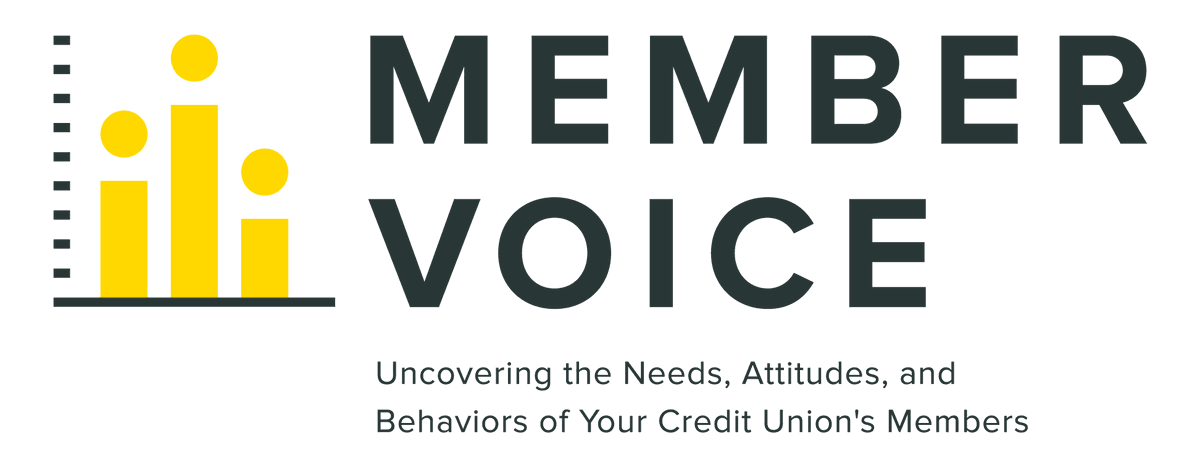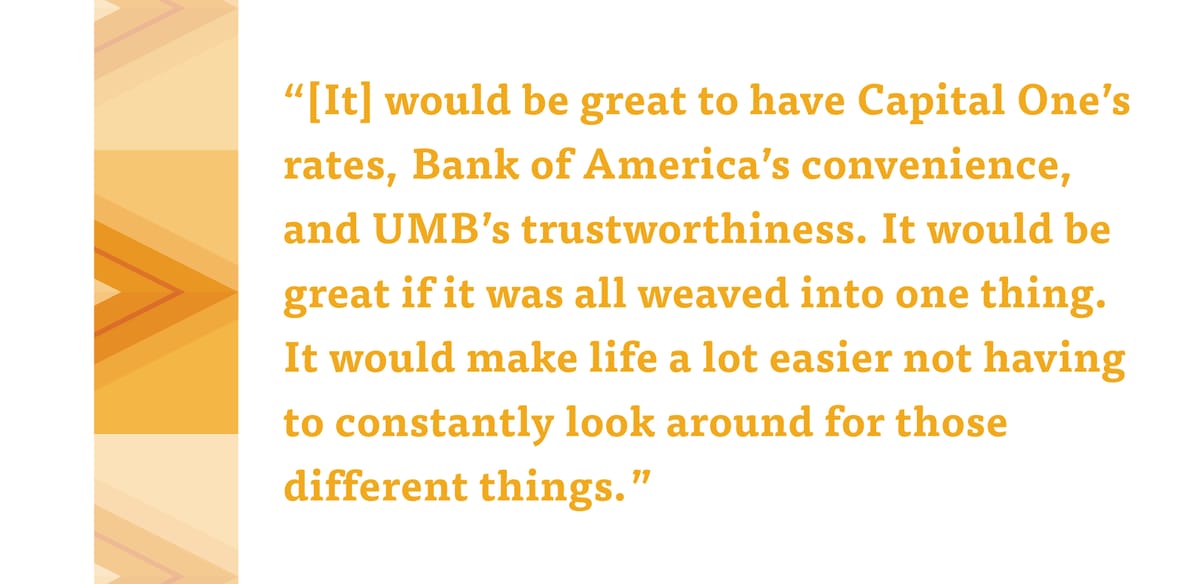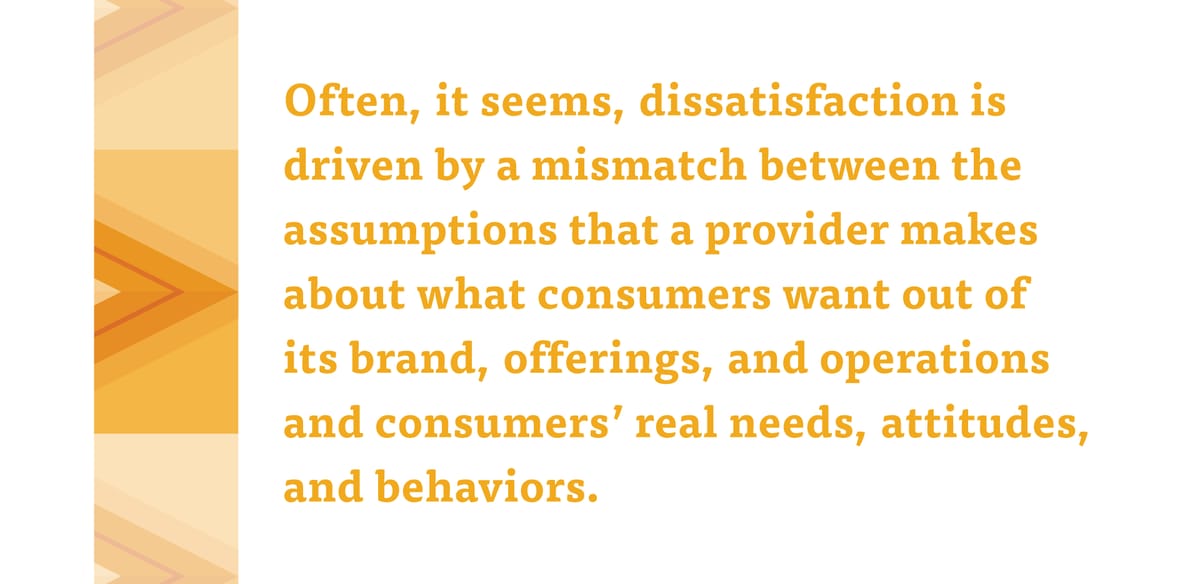Last week, we launched an ambitious new offering from Filene to help credit unions better understand their members. Member Voice is a powerful consumer segmentation model designed specifically for credit unions to tailor their offerings, operations, and marketing to the needs, attitudes, and behaviors of five different types of credit union member.
In June 2023, as we launched the research behind Member Voice, we interviewed 10 people from across the United States: men and women of different ages, with different backgrounds, socioeconomic circumstances, and financial needs. In partnership with the market research experts at Insights First , we set out to get a deeper qualitative understanding of how people manage their finances and how they think, feel, and talk about money.
What we learned changed how we think about consumers’ relationships with financial services providers.
1. People piece together immensely complex personal financial support systems.
There have been many claims that the very idea of a “PFI” or “primary financial institution” is no longer relevant. When we asked our interviewees if they had a PFI, most said yes! When we dug further into people’s behavior and provider relationships, however, a different picture emerged.
For the people we spoke with, “PFI” meant the institution with which they conducted most of their daily or weekly banking transactions. But all of our interviewees also used many different providers for many different purposes. Everyone had at least one account at a major bank or local credit union to manage day-to-day transactions, especially paying bills, and sometimes for short-term savings. But they also split mortgages, auto loans, credit cards, investments, insurance, retirement savings, and more across a wide variety of providers.
Some of these relationships appeared to be arbitrary: One person’s mom had set them up with a Wells Fargo account years ago and only inertia had prevented them from switching; another joined PSECU as a state trooper simply because that was the financial institution for Pennsylvania state employees. Others were more intentional, choosing a bank because of an attractive credit card offering or good mortgage rate, or switching direct deposit to a credit union because of recommendations on Reddit and easy access to nearby branches. As one person told us, “[It] would be great to have Capital One’s rates, Bank of America’s convenience, and UMB’s trustworthiness. It would be great if it was all weaved into one thing. It would make life a lot easier not having to constantly look around for those different things.”
As we zoomed out, we saw even more complexity emerge, as individuals and families adopted and adapted products, services, and providers to meet their needs and their preferred approach to money management. One woman maintained a half dozen accounts with the same bank to manage her household finances: one joint account with her husband, a checking account for their food budget, another for mortgage payments, a third for emergency savings, a savings account for their three children’s future college educations, and a larger general savings account. At the same time, this woman also kept a checking account with a credit union, separate from the family’s finances, for her Etsy reselling “side hustle.”
In short, people have strikingly complex financial lives. This is partly a result of today’s fragmented financial services landscape; even people who expressed a desire to aggregate their financial situation to work with fewer providers were simply unable to do so easily. But it is also due to people exercising autonomy and creativity as they pieced together personal financial support systems tailored to their needs, attitudes, and behaviors.
The complexity of these personal financial support systems reveals both shared needs and differences in how people approach their finances.
2. People with very different demographic profiles share similar attitudes towards money.
We asked interviewees what being financially well meant to them, and we received a variety of answers—from being able to pay the bills on time and not living paycheck to paycheck to having enough money saved to live comfortably or even buy a second home. But however they defined it, each person’s sense of financial well-being was wrapped up in more encompassing aspirations and anxieties about the present and future; each person’s thinking about money was embedded in stories about the kind of life they imagined living.
We heard not just about saving up to buy a home but about hopes for a yard and horses, or a desire for a more organized home for a baby on the way. We heard not just about saving but about wanting to take a honeymoon, keep kids in school, help care for parents, start a small business, be an example for friends and family, and be able to leave something for grandchildren. We heard not just about financial literacy but about crowdsourcing advice from friends and family, looking to websites like X/Twitter and Google or Yahoo News for information about the economy, and joining online investment clubs or entrepreneurship communities for support and guidance.
It was in these stories that we started to discern patterns in the attitudes our interviewees held towards money and banking. We saw a few patterns pop up again and again with regards to people’s expectations and motivations when it comes to what they want out of a financial services provider. These included:
- How trusting or distrustful someone generally is of financial institutions
- A person's preference for consolidating or diversifying personal finances across institutions and relationships
- Confidence in one's financial situation
- To what degree someone is open to advice vs. a preference to go it alone
These attitudes manifested across demographic categories. We found consumers both young and old, men and women, who were more trusting and others that were less so; a group that was relatively comfortable and hopeful about their finances and a group that was more worried and insecure about the future; some who proactively sought out guidance and support and some who were DIYers, seeking to optimize their finances themselves. These attitudes were foundational in shaping what people wanted out of their financial services providers.
3. All happy banking relationships are alike; each unhappy banking relationship is unhappy in its own way.
What makes for a good banking relationship? What drives satisfaction and loyalty with financial services providers?
Listening to answers from our interviewees, we were reminded of the famous Tolstoy line, “All happy families are alike; each unhappy family is unhappy in its own way.” The same “Anna Karenina principle” applies here.
Among the people we spoke to, positive perceptions of financial institutions were remarkably similar, characterized by an ability to have one’s basic needs met, conduct quick and easy day-to-day transactions, and receive prompt, polite, and pleasant service when needed.
On the other hand, when financial institutions failed to meet consumers’ expectations, they failed in a whole mess of ways. Poor website design or mobile banking performance. Limited access to branches, or poor in-person service due to perceived understaffing or inconvenient hours. Lack of timely response to issues like having a credit card compromised. No coin drop. No budgeting tool on the app. A perception that rates were better elsewhere. Too many fees or fees that were too high. A lack of rewards. Too much marketing. Too little marketing. Marketing that felt irrelevant or “disingenuous.”
When we think about all these different failures, however, there is maybe a common thread that stitches them together. These complaints often come back to a misalignment between the financial institution and the consumer. There are, of course, times when a provider simply makes a mistake. But more often, it seems, dissatisfaction is driven by a mismatch between the assumptions that a provider makes about what consumers want out of its brand, offerings, and operations and consumers’ real needs, attitudes, and behaviors.
This aligns with previous research we’ve done here at Filene on how “member compatibility”—the focused alignment of credit union business models with members needs and expectations—is critical to credit union growth.
But what we learned in our interviews was also a lightbulb moment for us as we sought to understand not just what consumers do but why they do it, the decision-making calculus and emotional impetus behind their behavior. This why is at the heart of Member Voice, Filene’s groundbreaking new consumer segmentation model for credit unions.
To learn more about the five types of credit union members we identified through this research, watch our webinar on Member Voice —and then reach out to us at [email protected] to see how you can apply these insights in your credit union’s strategy, product development, and marketing and messaging.
We’ll continue to explore people’s financial lives and relationships with financial services providers in the coming months, so stay tuned!











